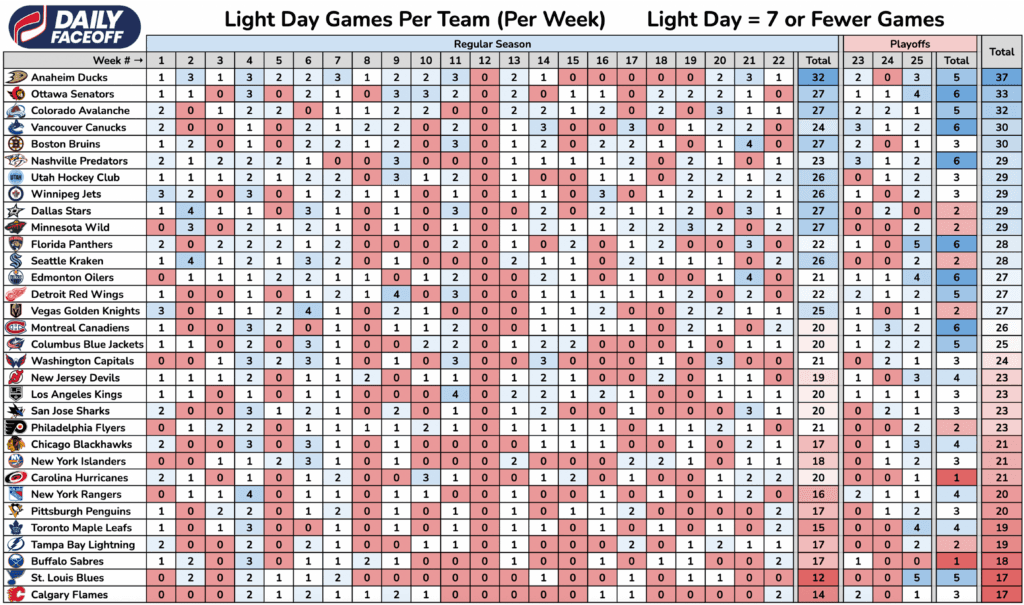Fantasy Hockey 2024-25: Using ‘Light Days’ to your advantage on Draft Day

Streaming players each week is common practice in fantasy hockey. It allows you to maximize games played and gives you an advantage over your opponent. However, this tactic can also be used on draft day. Below, we explore how you can use team schedules to your advantage.
Why It Matters
It’s a busy night in the NHL; everyone on your fantasy team is active. You set your lineup to the best of your ability but must stash a few players on the bench. The following day, you wake up and see that each of the players you benched went on to have career-high point totals. We’ve all been there.
Throughout the fantasy season, this will probably happen to you. It’s nearly unavoidable. But combatting this nightmare scenario begins on draft night. By drafting players on teams that play on light game days, you give yourself the best chance of avoiding being forced to bench players and simultaneously maximize your total games played.
A light day in the NHL is when less than half of the league is in action, which should provide plenty of flexibility in your fantasy lineup. The graphic below illustrates how many times each team plays on a light day every week and the season as a whole.

How To Utilize
As seen above, the difference in games on light nights is specifically staggering when comparing the Anaheim Ducks (37) to the Calgary Flames (17) and St. Louis Blues (17). The Ducks play on light nights a whopping 20 more times than the Flames and Blues, a statistical oddity that can be utilized to your advantage on draft day. This does not mean you should prematurely draft Troy Terry (ANA – C, RW). Subsequently, this does not mean you should avoid selecting Jordan Kyrou (STL – C, RW). Instead, this should guide you when deciding between two or three players that rank similarly in later rounds.
For instance, you may find yourself in a situation where you are fixating between Troy Terry and Yegor Sharangovich (CGY – C, RW), torn on which player to draft. Using Brock Seguin’s Player Rankings, we see that both players are projected to have comparable outputs this season, with Terry ranking at 198 and Sharangovich at 200. In this scenario, the disparity of games on light days between these two players provides a tie-breaker and makes Troy Terry the easy choice.
The same can be true if deliberating between Jonathan Huberdeau (CGY – C, LW) and Matt Duchene (DAL – C, RW). According to Player Rankings, both players are poised to have similar seasons and rank next to each other at 177 and 180. Still, the more favourable schedule for Duchene and the Stars, with games on 12 more light nights this season, might make him the more strategic selection.
Please note that it’s best to use this tactic only when deliberating between players in later rounds of your draft. Players drafted early will rarely be benched on your fantasy roster, regardless of the weight of the schedule. Meanwhile, lower-valued players, who are more likely to be benched on busy nights in the NHL, can be difference-makers on your roster when they have an abundance of games on light nights and never have to be benched.